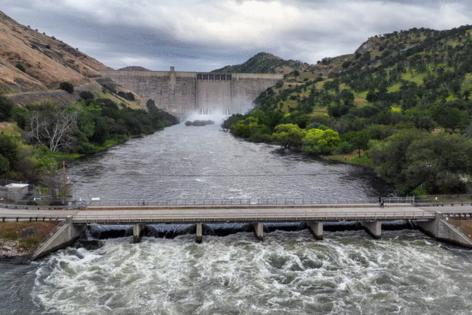Only 8% of California rivers and streams have gauges measuring flow, study finds
Published in Science & Technology News
In the face of climate change and worsening cycles of drought, California water managers have been increasingly focused on the precise tracking of water resources. Snowpack in the Sierra Nevada is measured with sensors and aerial images, reservoir levels are electronically logged, and the movement of water through aqueducts is apportioned based on rights and contracts.
Yet there is another key water metric that California has never adequately measured: the flow of rivers and streams.
New research by UC Berkeley scientists has found that only 8% of the state’s rivers and streams are equipped with gauges — devices that measure the level and rate of movement of water.
The study, published in the journal Nature Sustainability, details the large portions of the state’s waterways that aren’t monitored and examines the consequences for humans and wildlife as climate change intensifies the water cycle, alters watersheds and threatens vulnerable fish and other species. The researchers also outlined methods for California to select new monitoring locations to expand its network of stream gauges.
“We can’t manage what we don’t measure,” said Lucy Andrews, the lead author and a researcher at UC Berkeley’s Department of Environmental Science, Policy and Management.
Previous research has shown that not only are many California rivers overallocated, but existing water rights far exceed the average supply of many rivers. Inadequate data collection adds to these chronic problems, the study‘s authors said.
“If we don’t know how much water is flowing through our rivers and streams, it makes it very difficult to make decisions on how to allocate it,” said Ted Grantham, who co-authored the study. “We need to know how much water is available, and we need to know how much water is being used. And California is actually really deficient in both of those areas.”
Poor monitoring not only hinders the state’s ability to oversee supplies and manage floods but also clouds our understanding of how water diversions and drought exacerbated by the warming climate are putting fish and other aquatic species in peril, Grantham said.
“The only way we know that there is enough water left in a river for environmental benefit is if we’re measuring it,” said Grantham, a river scientist and associate professor of cooperative extension. “And if we’re failing, if we don’t have an ability to know how much water is in there, it only takes a small amount of time for a river to go dry, to have extremely negative impacts on the species that we care about.”
California is recognized as a global hot spot of biodiversity, with freshwater species that are among the most threatened in the world. The list of fish species at risk of extinction includes winter-run Chinook salmon, steelhead, green sturgeon and delta smelt.
...continued
©2024 Los Angeles Times. Visit at latimes.com. Distributed by Tribune Content Agency, LLC.







Comments